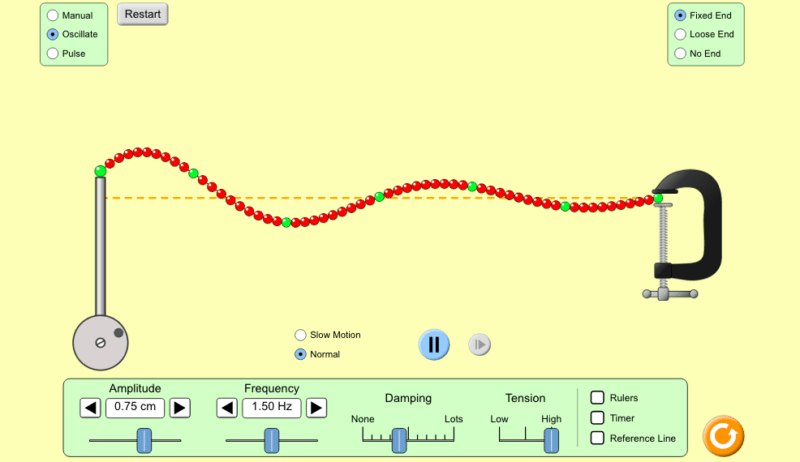Biology
If you need a template for lab reports, ideas for your biology club, pacing guides or lessons for biology, Pre-AP Biology, or AP Biology, this is a good place to start.
Developed by a high school teacher, Biology Corner includes curated resources from around the web paired with extra practice and presentations and as well as ready-to-use investigations.
Sounds odd I know, but this robust site hosted by Stanford University utilizes sea urchins as an engaging entry point to life science concepts ranging from basic biology (introductory microscopy and predator-prey relationships) to university-level curriculum (gene function in embryos).
This site’s evolution lab makes phylogeny and evolutionary history accessible to all students while scaffolding an understanding of the fossil record, the role of DNA in evolution, and an introduction to biogeography. Kids can also play the role of a molecular engineer by solving RNA folding puzzles.
Chemistry
Like most chemistry sites, virtual labs and lesson plans are freely available, but ChemCollective stands out with their scenario-based activities and forensics tie-ins with activities like the “Mixed Reception ” Murder Mystery.
Want clear, standards-aligned videos? If so, Bozeman Science is a great resource for teaching AP Chemistry. You’ll be able to flip your classroom and provide additional support to your students.
One of the best resources for Chemistry teachers nationwide, the AACT produces consistently high-quality resources including labs, demonstrations, and activities. The best part is that their materials are organized by grade and topic—including options for elementary school teachers, too.
Don’t let the name fool you. Sure, this site is perfect for middle school learners, but if you teach introductory chemistry or physical science, the level of materials is perfect for grades 9-10, as well. Lesson plans are easy to find and some are even available in Spanish for English language learners!
Chemdemos are virtual interactives for more advanced chemistry students complete with particulate models and real-time data help you get through labs that you may not have sufficient materials to complete. They can also give your students extra practice at home before or after “wet” labs.
This site facilitates a microscopic understanding of our macroscopic world. You’ll be blown away by resources like their Semiconductor and Chemical Bonding Module. All of the modules contain embedded assessments to keep your students on track and inform you of their progress.
Always free for everyone, this is a terrific resource for middle school and high school science teachers as well as parents. Each issue provides a new collection of articles on chemistry topics that students will find engaging and relatable. The back-issue online library offers interesting downloadable articles on all sorts of chemistry-related topics, while the Teacher’s Guides help you direct your students as they learn from their reading.
Physics

Complete with teacher-submitted and reviewed lessons, these activities help students explore topics including circuits, waves, and quantum mechanics.
With a curriculum corner, question bank, lab area, and a NGSS-devoted page, this is a valuable resource is among the best science websites for K-12—including distance learning!
Search through this great collection of hundreds of categorized ready-to-use handouts, labs, and lectures submitted by physics teachers. You’ll find resources on the conservation of energy and momentum, electromagnetism, fluid mechanics, and more!
The content from this popular site is comedic, clear and includes helpful algebra and calculus reviews. That means you can focus on the science content without mathematical misunderstandings.
This resource is a one-stop-shop for teaching—textbook included! You’ll find learning units, videos, interactive simulations, and even a comprehensive Facilitator’s Guide!
A wealth of resources for physics, math, and chemistry online.
|